Content marketing is one of the best ways to increase your website traffic because it involves creating quality content that lets you engage and share it with your target audience. This will not only improve your business image but also helps drive more traffic to your website because the content will attract new visitors and convert them into your customers.
You must be wondering how effective content marketing is. Well, research has shown that it costs 62% less than traditional marketing and can generate three times as many leads. So means value for your bank account and more traffic for your online business.
What is content marketing?
So, the first thing you have to understand is that content marketing functions as a strategic marketing approach focused on creating valuable or even educational content that can be distributed to or shared with your target audience. This is to attract the target audience to your website and drive them to action as profitable customers.
Another important thing to note is not to create crappy content, the content you created must give value back to your target audience for the time they spent viewing or reading your content.
The reason this is crucial is simple; the Internet is built on and peddles content. Daily, billions of people search, browse and view content in different formats – videos, articles, blogs, infographics, images, and many more. So when the amount of content increases daily and at an exponential rate, does the competition for each of those content.
To make your content stand out from the rest and get your target audience’s attention, you need to produce quality content that will give value and uniqueness. To find the said content people will have to search and browse the term on Google, and Google will then match the query to the indexed content.
How to get your content indexed? Will get to that soon. So keep diving deeper.
Anyways, the quality of content will be the main factor that determines whether people will click through to your website or not. Hence, the reason why you keep seeing ‘quality content’ in this ebook. So the most important part is the title and opening paragraph, make sure they are interesting or something that people look for such as solutions, etc.
Okay, so you are unsure what’s crappy and what’s not. We’ll help point it out to you; avoid narcissistic content (always about you, heck might as well you talk to your reflection in the mirror), cringe jokes that make viewers’ skin crawl, puns that are borderline rude, or downright dumb. The said elements are to be avoided, especially if your brand and the business image are all about exclusivity, coolness, and the sorts. Instead, create content that will make your target audience go “oooh” or “aaah” when they view or read your content.
Well, yeah, you can create content that is rebellious but mindful not to go overboard with it, else it might backfire.
That is why it is important to create high-quality and valuable content as it will become the foundation and identity of your website. They will be your brand and business voice, the ones to attract traffic to your website. So to attract the right traffic, your content must first match the demographics of your target audience.
Content marketing strategy
Well, of course, you will need some strategies. If you go in, gun blazing without any strategies, you will end up shooting yourself in the foot instead.
So that is why we prepared this list of strategies for you. Half of the battle is to know what you should do. So when you know what you’re doing, your content marketing campaign will definitely see results.
1. SMART goals
First is to set SMART Goals. What are SMART Goals? SMART is an acronym that stands for Specific, Measurable, Achievable, Realistic, and Timely.
And the purpose of SMART Goals? It is to make sure your content marketing or business campaign sticks to its plan (as much as you can) and to give you a clear view or idea of what to do step by step.
For example, you can list them like this:
- Brand awareness
- Boost revenue
- Increase visitor engagement
- Improve brand loyalty
Well, these, of course, are just examples. You should come up with your own. Tailored specifically to your business and marketing campaign.
2. Determine your KPIs
Though merely listing without a proper and detailed target is pointless too, you know. So you need to set a table and KPIs for your goals.
You can set the table like this:
| SMART GOAL | RELATED KPI |
| Visitors engagement | Time spent on the website, pages visited, most frequent page, likes, shares, follows, and mentions |
| Brand Awareness/Interest | Number of subscription sign-ups, website traffic, social media followers, mentions |
You can set them in a table like this and then proceed with your content marketing campaign according to the parameters you have set in the table. This should be able to help keep on track and improve when needed.
3. Think and decide on content type
When coming up with what content you should push out, you need to consider your buyers’ personas and target audience.
So to figure out what content you should publish, you can narrow them down by asking these questions:
- When people browse the Internet, what do they type in the search bar?
- What kind of solutions are they looking for?
- How to convince them your products and services can help?
- Is there any value back for your target audience after they spent time reading or browsing your website?
Once you are able to answer these burning questions, then you should be able to come up with a content type that is beneficial and suits your target audience and buyer personas.
4. Choose your content channel or platform
All right, now that you have decided on content type, the next step is to decide on which channel or platform you publish your content on.
Well, this depends on your target audience and buyer personas. But the most obvious channel or platform is social media like Facebook, Instagram, Twitter, etc. You leverage all three platforms but once you have identified which platform or channel is frequented the most by your target audience.
Though if you’re planning to run full on paid ad campaigns, then Facebook and Instagram is the place to do so. These two social media platforms will definitely help your content reach more audiences.
5. Set your budget
Much like everything else in life, you must set a budget. Else, you will run out of money before you know it.
So, ask yourself, what type of content will you be creating, and where you will be publishing it.
Next is to ask to yourself;
- How many content is required to achieve your goals?
- Does your content require graphic support like infographics, images, or videos?
- Do you need tools such like Ahrefs, SEMrush or Ubersuggest to support your content planning?
- How are you planning to distribute your content? Does it involve SEO or paid media?
Once you have figured this all out, make a note of them and adjust your budget accordingly as your campaign runs. You don’t need to have a fixed budget, just make sure you don’t go overboard or spend needlessly.
6. Time to create and distribute content
So to ensure you are able to create and distribute content consistently across all channels or platforms, so that your target audience is able to consume and possibly convert consistently, you should create a content calendar to help you stay on track of what’s going on.
Oh, don’t worry. There are quite a few free content calendar tools and templates to help you get started. And here we have listed a few for you to check out.
Hubspot’s Free Editorial Calendar Template
The greatest challenge of content marketing is not the actual writing but rather the planning part where you need to figure out all the nifty little details of what makes a great content. With that, HubSpot comes out with an editable Google Sheet/ Excel Sheet content editorial calendar to help you speed up the implementation of your content strategy.
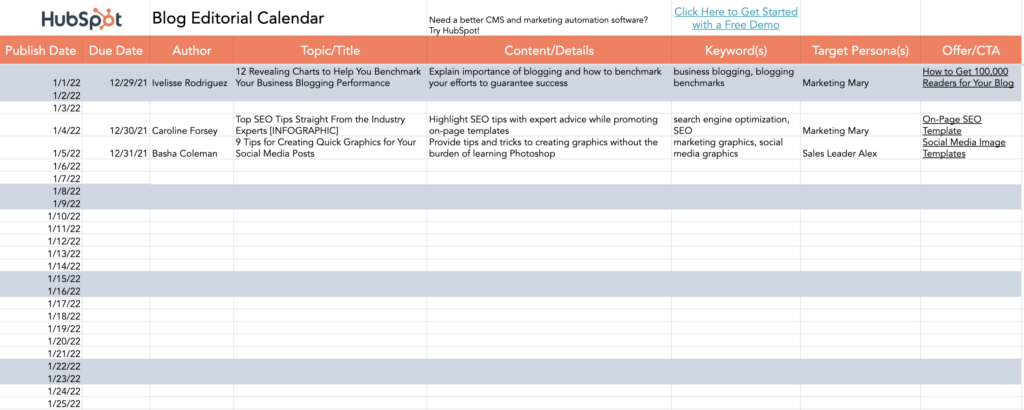
Trello
Big brands like Mashable and The Changelog have big using Trello to keep their content pipeline flowing seamlessly. Trello’s editorial calendar board follows a kanban workflow. Blog post ideas are added as cards to the Incoming list and journey through development stages from left to right across the board until they are published on the blog. They have paid and non-paid version depending on your needs and requirements.
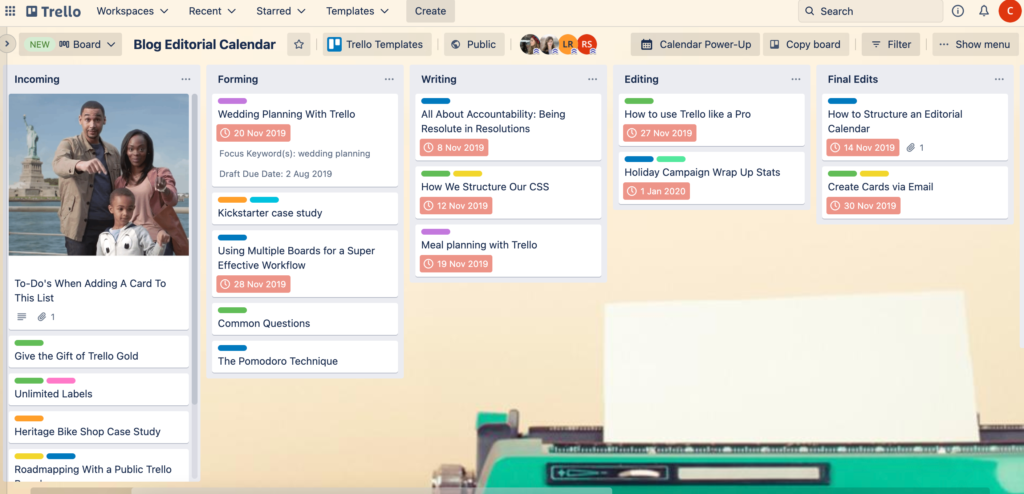
Asana
Asana is an excellent project management tool where you can make use of their editorial calendar to manage your content planning, production and distribution. A content checklist will be handy to ensure each contributor is aware of what needs to be done to ensure timely deliverable. They have paid and non-paid version depending on your needs and requirements.
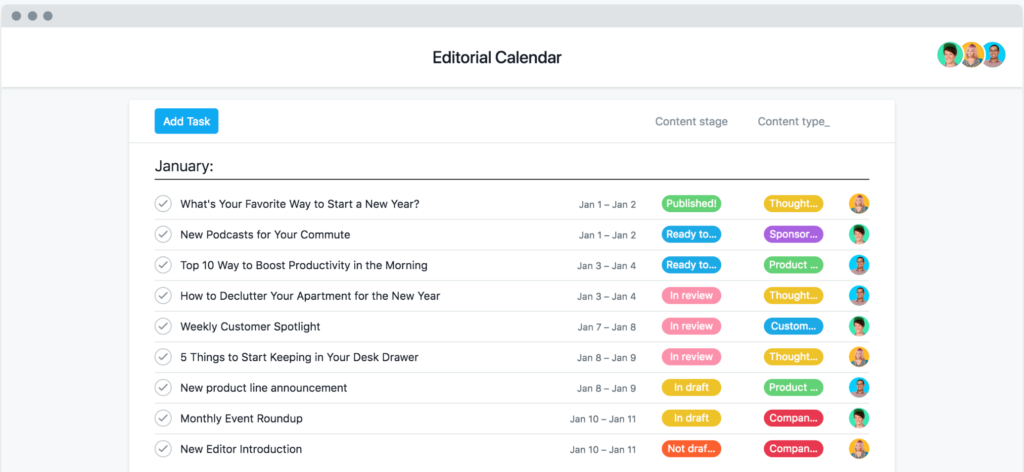
Coschedule Forever Free Marketing Calendar
The world’s first forever free Marketing Calendar from Coschedule! The powerful but free calendar allows you to plan, organise, manage distribution, and share progress of your content effort.
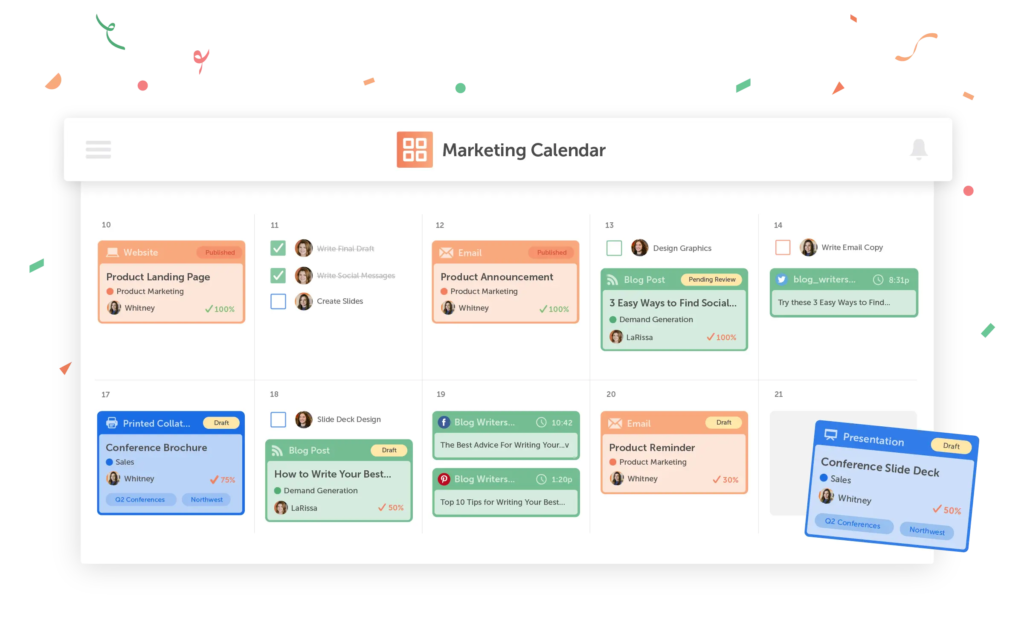
7. Observe, Analyse, and Measure
The last step is to continuously observe, then analyse and measure the results and impacts received from your ongoing campaign. So that you make necessary changes and improvements to further enhance your campaign reach.
The best tools to help you analyse and measure your campaign are Google Analytics and Google Search Console. Both tools present you with tons of features and tools to help you gain insights for your campaigns such as; most visited pages, keywords that lead visitors to your page, conversion rate, etc.
Types of content you should explore
1. Blog posts
Having blog posts that are relevant to your product or services and the market you are targeting will definitely help you gain relevant web traffic. The blogs are high-quality, engaging, informative, and have all the relevant keywords. It is also a low-cost way to boost traffic, so it is very sustainable in the long run.
So when you are writing blog posts, keep these pointers in mind:
- Optimise your blog content for SEO (keywords, meta data, heading structure, etc.)
- Use a pillar or a cluster model to help organise your blog topics
- Stick to content that is relevant to your products, services, and industry. Give value and information.
A very good example of business that does exceptionally well with their blog posts is Hubspot. They stay true to their core product and deliver content that speaks to their audiences — marketer and sales enabler.
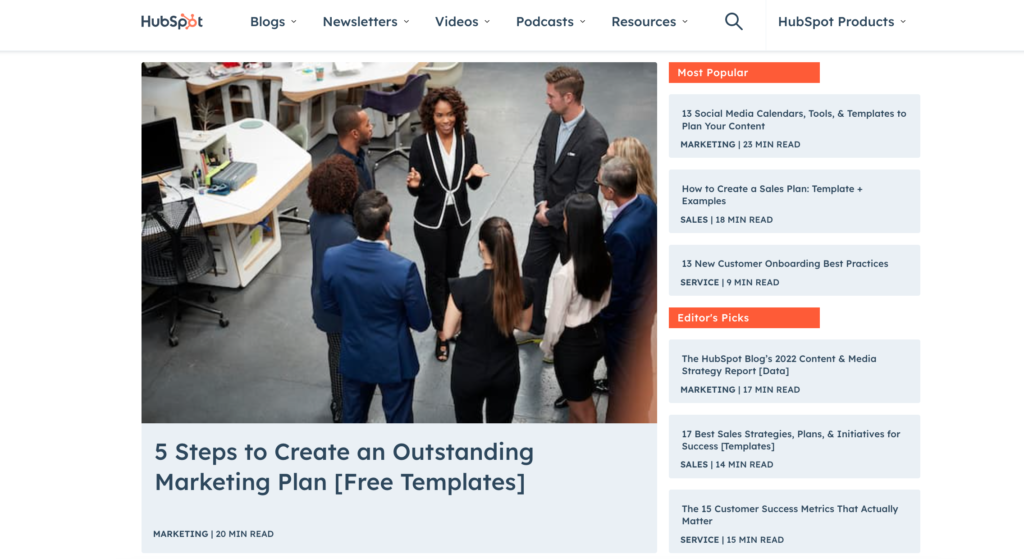
2. Videos
Research show videos are more effective in engaging your audience. This is because most people find the visuals, effects, and animations of video far more appealing than reading. In addition to that, some people find videos more appealing because they can fast forward, skip or rewind to find the answer they are looking for.
All in all, video marketing could change the landscape of your business’s growth, if done correctly. Video marketing involves incorporating video into your overall content marketing strategy and campaigns and study suggests that video helps increase brand awareness and generates a strong return on investment (ROI).
No wonder more brands are investing into producing video and incorporating video into marketing strategy. The best type of video marketing campaign doesn’t just create more traffic and leads but it displays your company’s personality too! Fiverr is no stranger to using video to tell their brand story, and as well as their fleet of freelancers’ stories.
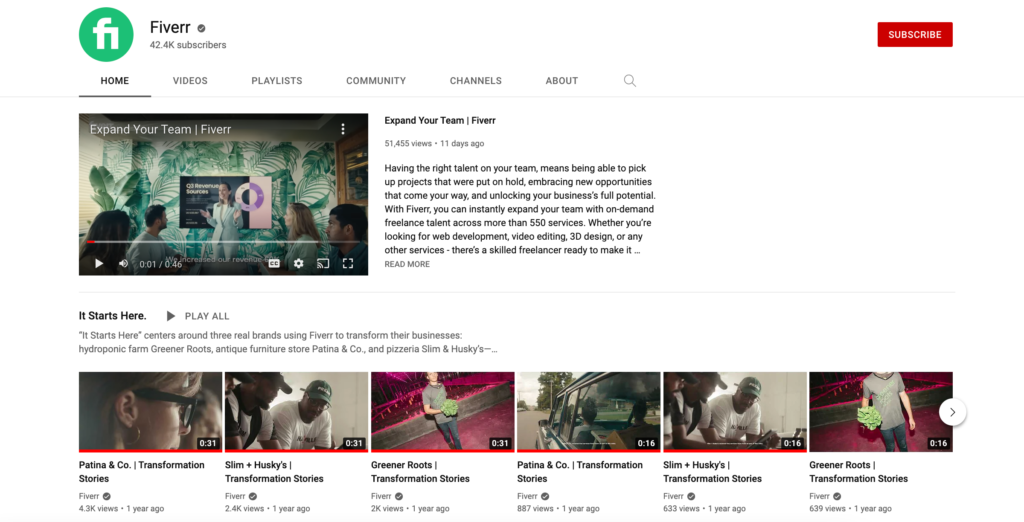
3. Infographics
Infographics are so much fun! You can be creative and crazy with the visuals, but of course you have to make sure your audience is able to understand it.
You can use infographics to help your target audience understand how your services or products work using eye-catching colours and fun graphics.
Infographics also help organise and present your hard data to visitors. This will help them to understand better what your business has to offer, look more reputable, and know what you’re talking about.
And infographics won’t burn holes in your budget as they only require a small cost to produce. So it is a very sustainable method of content marketing.
You can check out one such sample from LinkedIn. LinkedIn has been using infographics to deliver complex data points from their ecosystem and turn into something that is meaningful yet easily digestible to help their customers make better decisions. One such infographic would be — The Most Inspired Sales Professionals in the World.
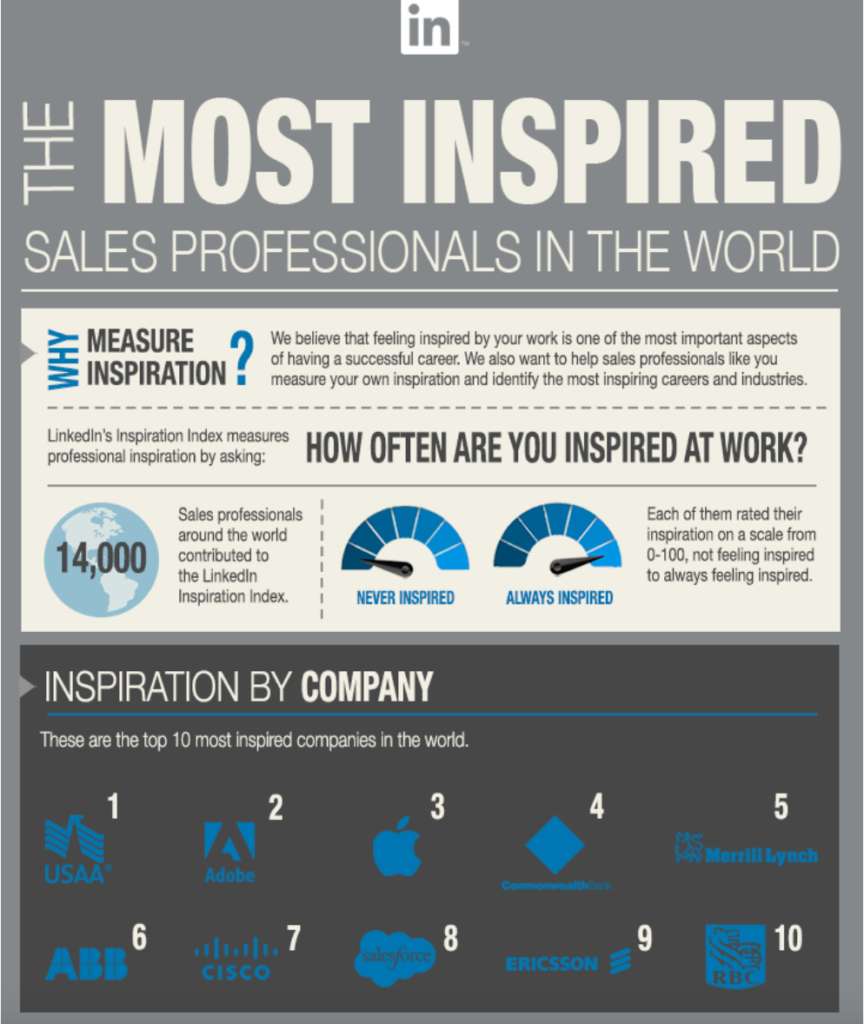
4. Case Studies
Case studies here mean you should present and include all issues or situations that your products or services had managed to provide solutions to previously. So, spare no details. Include all the juicy bits of how your services or products managed to resolve them.
In other words, case studies are testimonies with in-depth information and details of your services or products’ success. This will help increase your business/brand legitimacy and convince your target audience to convert into clients or customers. As the saying goes; the proof is in the pudding.
Typically software businesses are great at creating case studies as it is the best way to get people’s attention and get them to commit to the idea that using their product means better productivity, better output, and better results. One such example is Zendesk where they created a library of case studies.

5. eBooks
Unlike blog articles that are fixated to shorter time of attention, an ebook gives you a lot more room to go in-depth about any of the solutions you are providing or information you ought to deliver. With that, ebook content marketing presents the perfect opportunity to expand on different facets of your business or topics in your industry.
You will see brands that are committed to produce an arsenal of ebooks to furnish their content marketing strategy as ebooks can do more than educating your target audience but it can very well engage with them as a lead generation tool. Often you will see some engaging ebooks that you just can’t resist downloading but in order for you to download them, you are required to provide some information about yourself. Quite a neat trick right? Giving you something for free but in return getting your information for future marketing purposes.
There are a myriad of brands that have created some of the most amazing library of ebooks out there but one struck out — GatherContent. They actually put together a few comprehensive ebooks that really aim to help their prospective customers solve their immediate needs. One sample would be their Lead with Content, a 79 pages ebook jam packed with details on how to put content at the centre of digital transformation. A worthy read indeed.
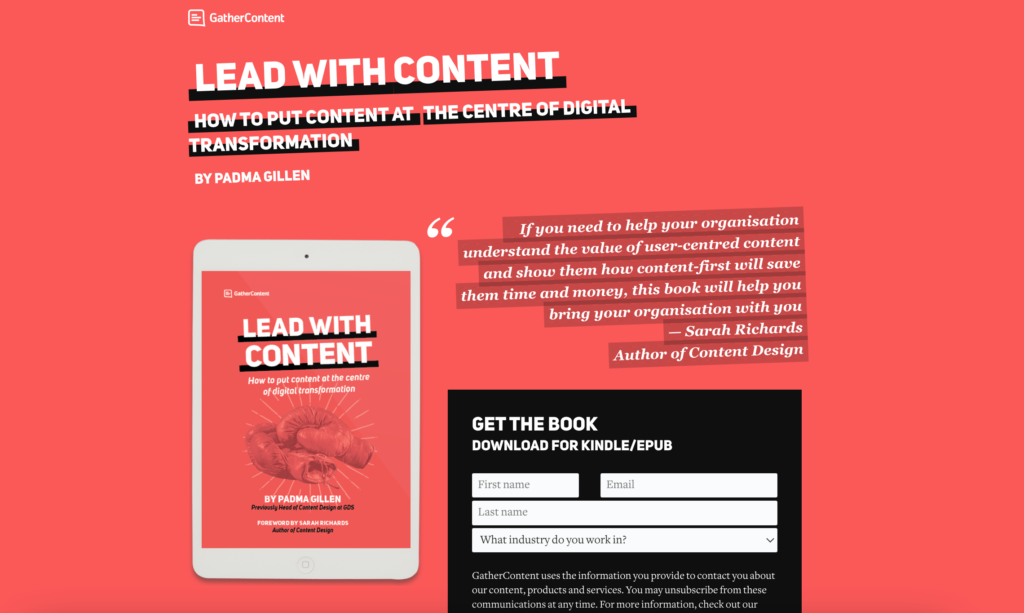
6. User-Generated Content
User-generated content or UGC can be content of any type, usually in the form of images, videos, social media posts, testimonials, or reviews. UGC is defined as any type of content that has been created and put out there by contributors or fans to your brand or products, it is the act of users promoting a brand rather than the brand itself.
UGC campaigns have been a constant player in the marketing world due to several reasons:
- UGC puts customers front and center
- People trust real people as opposed to words from marketers
- UGC is authentic
- UGC creates community
- UGC has a high ROI
- UGC is cost effective
One brand that did particularly well with UGC is Starbucks. Their #RedCupContest has successfully garnered more than 30,000 photos of red cups to promote their drinks in the festive season. All the customers need to do is share cool photos of their coffees in red cups and stand a chance to win a Starbucks gift card.
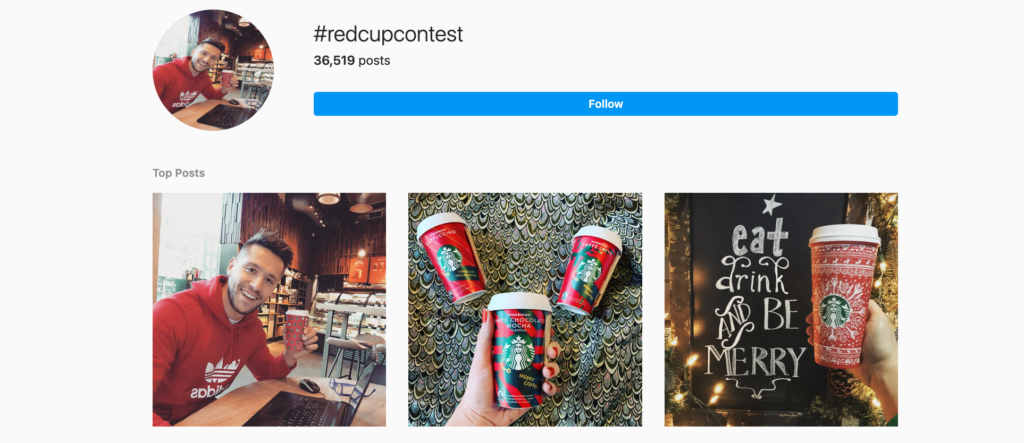
7. Memes
If you fancy yourself a meme lord, then this type of content marketing strategy is for you. Though you will have to keep a close ear and an eye on the Internet so that you will be able to use the latest and trending memes. Just make sure the memes are adjusted to fit your business and the intent of your post. Else, it might backfire on you, which is not a pretty sight.
There are plenty of benefits of meme marketing. For starters, it requires low effort but comes with high rewards; it appeals to younger audiences; and they are relevant. But yes, you will need to do some digging and look up on the Internet to get an idea of what’s the trending memes nowadays. Or if you are good enough, you can always use the old and classic memes and give them a fresh new flair.
One local brand stands out from the crowd when they successfully build their brand even when their business is pretty much shuttered due to the pandemic. GSC has been creating memes to address some of the frustrations Malaysians are going through during the height of the pandemic and it pays off well!

8. Testimonials
This is the standard and go-to content marketing yet effective. Testimonials are reviews or comments made by your customers about your products or services. When potential customers land on your website, many will be sceptical or hesitant to trust you right away and that’s when customer testimonials come in to save the day. Let your happy customers do the talking as it can often be more authentic and trustworthy as opposed to a marketing talking.
Effective testimonials go beyond a simple quote that proclaims your offerings. They need to resonate with your prospects and in order to do so, testimonials need to tell a story, being able to inspire and motivate.
So where would the testimonials be shown? They can be across your social channels and most importantly, they need to be well positioned in a landing page within your website to showcase a collection of testimonials. Having a testimonial page serves as a powerful marketing tool to build trust and encourage potential customers to take action.
One brand that stands out would be Codecademy. They have created a series of Learner Stories that very well tell the story of how people around the world are able to reshape their lives by learning to code.
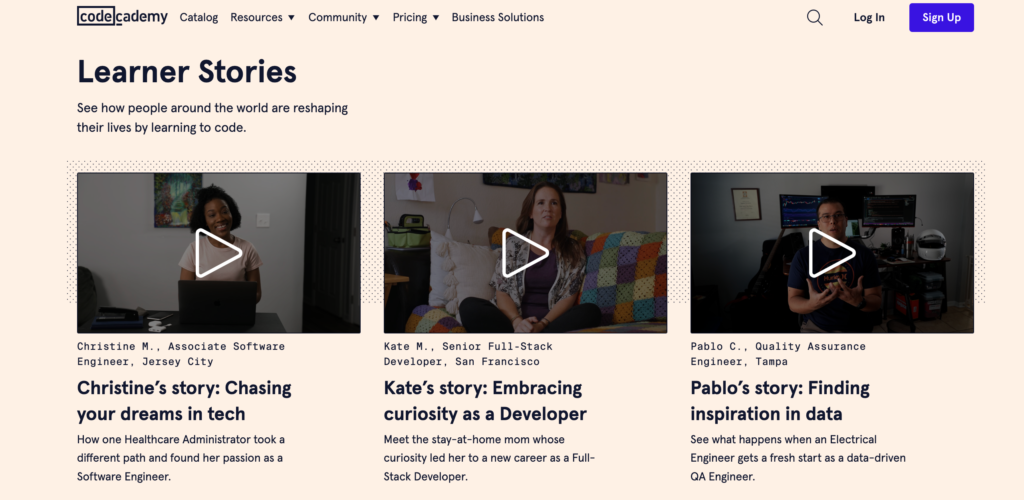
9. Whitepapers
Whitepaper has always been included as part of content marketing campaigns to provide a more in-depth look at a certain part of their business. Whitepapers are long form content that typically include original or compiled research to offer insights, best practices, and/or use cases of the impact of your product or service.
Whitepaper marketing has a lot of positive implication that include:
- Whitepaper generates leads
- Whitepaper spread expertise and build thought leadership
- Whitepaper builds search and social presence
- Whitepaper builds arsenal of original research
Google is no stranger in releasing whitepapers to establish a strong authority to convince users to explore their product compared to others. Check out these comprehensive Google Cloud Whitepapers aiming to shed some light on the capabilities of Google’s cloud servicing.
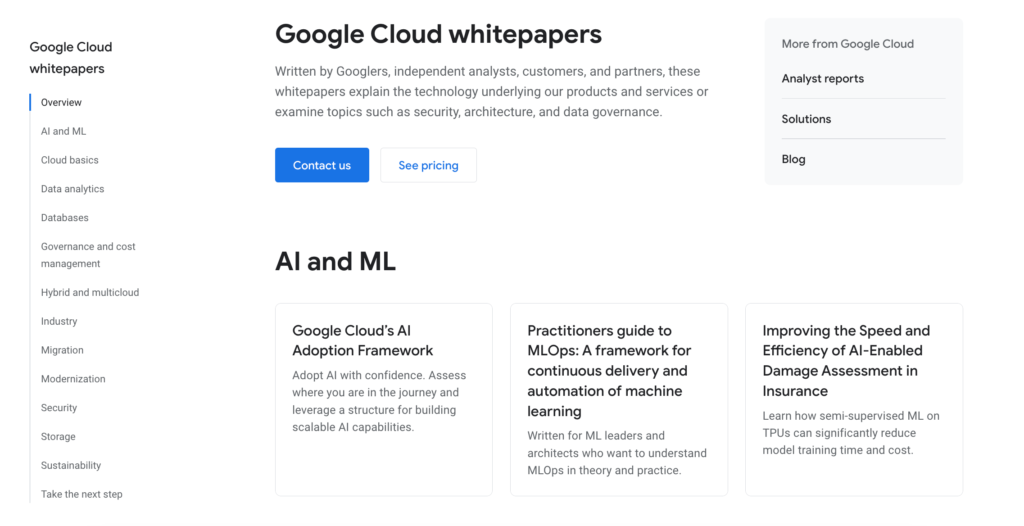
10. How-to Guides
How-to guides are a content format that delves into the process of completing a certain task. Think of it as an instruction manual but a more vibrant and shareable form of manual. It is usually more user friendly and less intimidating compared to technical manuals, which makes it more reader engaging.
A successful how-to guide would be able to present any information in easy-to-read formats and keep the technical jargon comprehensible. On top of that, lots of visuals are also needed to get the idea across, just like this very guide that you are reading now.
Hootsuite as a social media management tool is no stranger to coming up with social media guides. For instance, this detailed Social Media Marketing Strategy guide is able to help marketers and business owners develop social media presence with their 8 easy steps strategy.
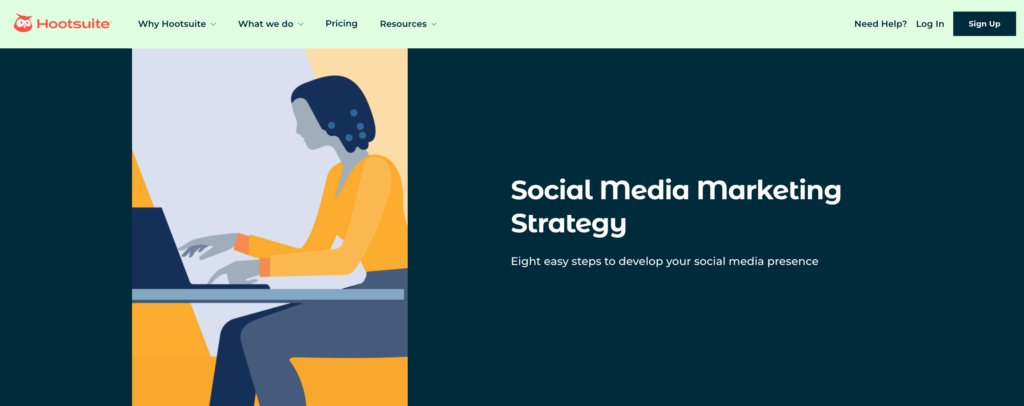
11. Influencers
Oh yes, bet you also already know and are considering this, right? Influencer marketing has already become a buzzword itself and is now a mainstream form of online marketing. Choosing the right and in-industry influencers will certainly help you. Because not only are they widely known but also well-versed and maybe an expert of the industry. So their words carry a lot of weight once they’re posted on social media.
Not only is an influencer able to reach a group of audience who previously did not know about you, influencer marketing can also help furnish your content where you can repurpose these content for future marketing activities. However, one should also understand that influencer marketing is not about quick results and it isn’t just about finding someone with an audience and offering them money or exposure so they can say good things about you.
As a brand, you need to be able to sell to influencers and get genuine feedback from them. Money might still change hands here but at least you know that the comments are real and authentic. That’s what is going to make or break your influencer marketing campaign.
Lululemon is a fitness brand that promotes work-out routines and lifestyles. They have been exploring influencer marketing as a mean to promote their product and at the same time generating content to feed their social.
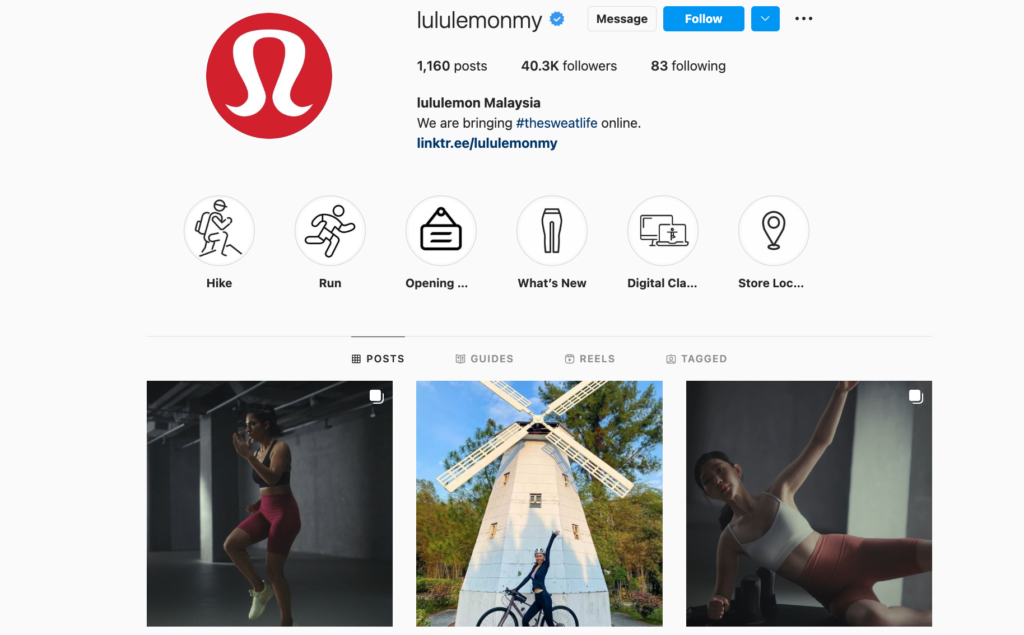
Why content marketing works
Content marketing works for several reasons, and in this section, you will be able to understand what those reasons are.
You can provide value.
Yes, no matter what the settings are, be it online or physical business your customers will always consider the value they will get back once they purchase or commit to your services. The same goes with content marketing, when you put out content the audience will take a look at the title and the nature of the content. If it is relevant and what they’re looking for, then definitely they will view it and continue over to your website to see what other values your products or services can offer. That is why it is important to create content that matches your target audience.
Establish credibility for your brand and business.
By providing valuable or educational content, you will be able to establish yourself as someone knowledgeable and know what they are doing. So this will help convince your target audience that you can provide them with the solution they’ve been looking for. So in a nutshell, it is to brag about your knowledge of the industry or field you are in so you can convince the audience to become your customers.
With every quality content, you put out, both brand awareness and trust increase exponentially. Because people will start to recognize your business and brand for the consistent quality content that you have produced. Research shows that people will likely make a purchase or subscribe to a service from a well-known brand and company.
Helps Google understand what the hell your business or services is all about.
Content marketing is also effective in helping Google to understand the nature of your website. Else, Google might cast your website into oblivion by deindexing it because it couldn’t understand what your website is about and its relevance.
Google’s job is to match people’s queries with the best and most relevant results it scrapes from the Internet. To do that it will need to be able to understand what each piece of content is about. So if you want Google to index your website and put it at a higher rank on the search results page, Google will need to understand what your website is about. And the best most effective way is to create quality content with keywords related to your business, products, or services, and target audience.
By including relevant keywords in your content, you will be helping Google to understand what your website is about and its relevance. Once Google understands, it will be more likely for your website to rank higher and this will make your website more visible to people.
Create more pages on your website which will act as entry points or landing pages for visitors to go.
When you create content, you will need a page to publish them on. And when you have a lot of content means you will need a lot of pages on your website. So with more pages on your website, it will create more opportunities to rank your website higher on search engines and establish your website presence on the Internet. This also will make your website more visible and people will be more likely to visit your website.
The commodity that you can share on social media.
Social media is a very powerful and influential tool. When you share content that is enjoyable or informative people will likely share it with others. So when this happens, more people will be aware of your business and brand as well as the products or services you provide. Simply put, your website will receive increased exposure and increased exposure means you will be able to reach a larger audience and this leads to an increase in online traffic.
With more traffic, you will be able to convert more visitors into customers for your business. That is why content marketing is a powerful and effective way to increase your online traffic if done correctly. It will also make your brand voice louder, hence differentiating your business from competitors. Besides that, content marketing will also help Google to understand the nature or niche of your business, making it easier to index and rank on search results pages
Now that you have this knowledge within your grasp, it is time to start experimenting and implementing content marketing for your online business. But don’t worry if you have no idea where to start, because we have guides to help you start.
Start blogging it right
Wondering where are the guides we mentioned before? Well, here you are. You have arrived and are about to find out how you can start content marketing.
You can start your content marketing with blogging. Yes, good’ol blogging.
How to write an engaging content?
As you have read before, high-quality content is the shitz. So in a blogging case, you will need to write a high-quality article to make it not only engaging but also noticed by Google. However, quality isn’t the only thing you need to take into account. The number of articles also should be taken into account, because the more quality articles you have on your websites, the more likely you will be able to reach more people, and this will help generate more traffic.
So what makes an article high quality? Besides the topic itself, the article you will be writing must be informative or educational, keyword-rich, and engaging. By engaging means, you’ll need to sprinkle a teeny-weeny bit of personality into it and an archetype online persona (we will get to this later) that matches your target audience. This will make people come back for more and stick around longer on your website.
Here are a few tips for you:
Put yourself in your audience’s shoes, then think if you were in their place what kind of articles you would want to read? Especially articles that are related to your business. The next step is to narrow it down to a topic you can write in an engaging manner AND informative.
1. Coming up with Ideas
Sometimes you just have to jolt that brain of ours to squeeze some ideas. So grab a seat, research, and think of some ideas from there. One of the effective ways to get an idea of what to write is by posting up a poll or asking your audience via survey, but this of course only if you already have a decent amount of followers or audience. If not, well, you can always rely on good old competitive and market research with a myriad of tools like Buzzsumo, Google, Ubersuggest and more.
Alright, so once you have managed to narrow the list of topics, it is time for you to think about how to write the article interestingly and engagingly.
2. Catchy Headline
Another way to grab your target’s attention is with a catchy headline. Why? Because that is the first thing people will see and judge (yes, people are judgy) when they come across an article online. Here are a few neat tricks to concoct the most catchy headline:
- Use numbers (e.g., top 10, best 20)
- Use emotional objectives (e.g., free, effortless, absolute, peculiar)
- Use unique rationale (e.g., reasons, facts, ideas, lessons)
- Use 5W1H (what, why, when, where, who, how)
- Combining the above into an audacious statement (e.g., 10 content ideas that can help you sell your product instantly)
3. Relevant Keywords
This is a crucial component when it comes to writing online articles because as you have read in previous sections, Google will match people’s queries by finding keywords that are relevant and related to those queries. So even if your articles are engaging and informative, if it doesn’t have the right and relevant keywords, the audience you target might not be able to find them.
There are an abundance of tools that will help you figure out what keywords to target and use such as Google Keyword Planner, SEMrush, Ahrefs, Ubersuggest, and more.
4. Mind Your Article Layout
Next is your article layout. Yes, the layout, meaning you can’t just slap words onto your blog post. Why? Because people who look up online articles usually prefer to scan the articles for important bits so that they find the answer quickly.
So be sure not to slap one huge long paragraph in your article. Instead, try to write three or four lines per paragraph, it will immensely help your readers to scan for the important bits in your article. And, bolding the important bits like this will also help your readers to scan your articles.
Other than that, make good use of subheadings, numberings, and bullet points in your articles. This will give your readers a sense of direction when reading your articles.
5. Engage Your Readers
You can throw in some storytelling, use the word ‘you’ often, providing examples and personal anecdotes in your articles to make it like you are engaging or talking directly to the readers. This will make the articles feel more ‘human’ and less bland. Of course, the article content should be informative and read-worthy.
6. Include Images or Videos
Not just kids love reading books with pictures in them, we adults too. Once you have finished writing your article, be sure to include suitable visuals in the form of images, GIFs, or videos to give your article more flair and engagement.
Psst… You do know that you can achieve great visual designs for free right? Here are some insanely good tools that can be too good to be true:
- Canva, Piktochart = Free design tool
- Pexels, Unsplash, Pixabay = Free stock photos, audios, and videos
- Freepik = Free icons
7. Call to Action
A call to action or CTA is another important component of online content to get website visitors or content readers to take a desired action — like buying a product. A CTA is generally very short and succinct that can bring out your intention in just a few words.
You write something like “don’t forget to share this article with others if you find it useful” or “click here to download this article” or “like our articles? Sign up to receive updates”. Why include a call to action? This is to help convert visitors into leads.
Here are some tips for writing an enticing CTA:
- Start with an imperative
- Make it low risk
- Use persuasive writing skills
- Create sense of urgency
- Make it pops
8. Proofreading and Editing
Now, this last step in the writing process is often taken for granted by most people. You as a writer may not notice the mistakes plastered here and there in your articles. Because your focus was to pour and write the ideas in your head onto the doc. But it’s a whole different story for your readers. They will notice your mistakes such as grammar errors, miss spelling, and so on.
Be sure to have someone else proofread your article before publishing it, so they can point out the mistakes and have your edit those mistakes out. This is also to ensure the article makes sense and is clear and concise with the topic.
But what makes a proper marketing blog?
A proper marketing blog should not be completely derivative. What the hell does that even mean? To put it simply, something that is based on another source. You can take from another source, but make it and write it your way. Insert something unique, something that only you will say. Your take and thoughts, that what we meant your blog should not be derivative.
For example; there are two technology articles, but both articles are covering the same topic. The first article is simply a regurgitation of the tech news, commenting on what this means and whatnot. The second article, though it is covering the same news and topic, is written from a unique angle and perspective which sparks questions in the reader’s mind.
The second article is the type that becomes a topic of discussion among people and sharing on social media. So when people share the said article on social media, this will help to generate traffic to your website.
Next is to ask yourself; is your article something people want to read about? Is another article like yours elsewhere? So, how can you make it unique from other articles?
To make your articles more unique and different, write in a comprehensive yet concise way. Not too long, not too short.
We’ll give you an example; so you’re writing an article on crypto and DEFI. A comprehensive blog article would cover;
- The definition and nature of crypto, and DEFI
- Why is it important or relevant today?
- What are the risks involved?
- How and where can readers start investing in crypto, and DEFI?
This will make your blog post comprehensive yet straight to the point. Something that not many blog posts do.
Then, ask yourself ‘will my blog post remain relevant in the years to come?’
Because a blog post that can remain relevant for years will have higher chances to have people come back to it. For example, a blog post on how to create a responsive website will stay relevant longer compared to trending website designs. The latter is a good topic, but it might only be popular for a few months.
But hey, you can still jump on the bandwagon and take advantage of the trend. You will still gain traffic. But it is better if you have several blog posts that remain relevant for years so that you can generate continuous and steady traffic.
So, when creating content, make sure it is high-quality, comprehensive, and able to remain relevant on the Internet for years. If you manage to do this, then you are on the way to a successful content marketing campaign.
Of course, it may take more than one try, but keep following these tips and keep trying. You will be able to see the results eventually. So be patient and keep trying!
